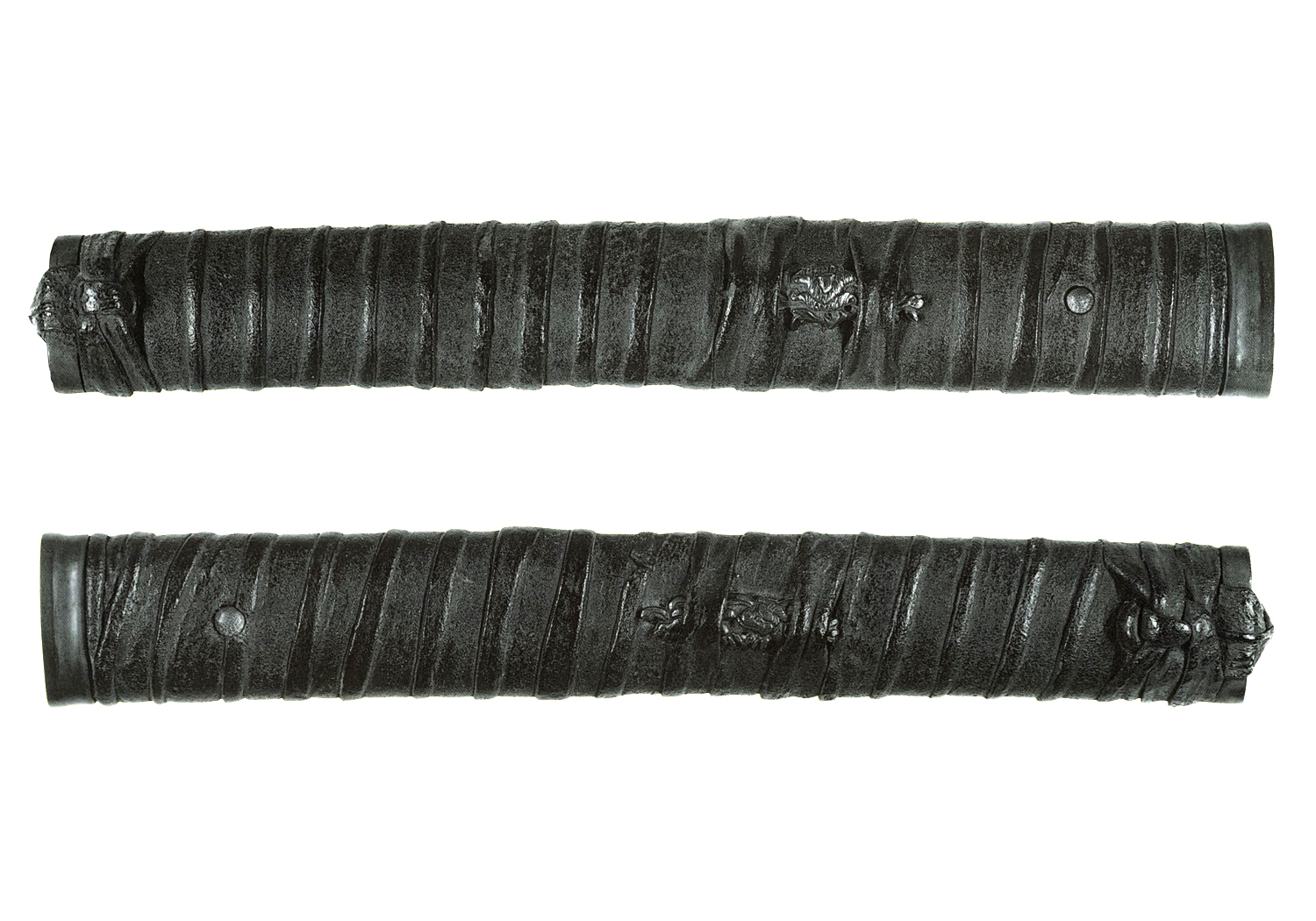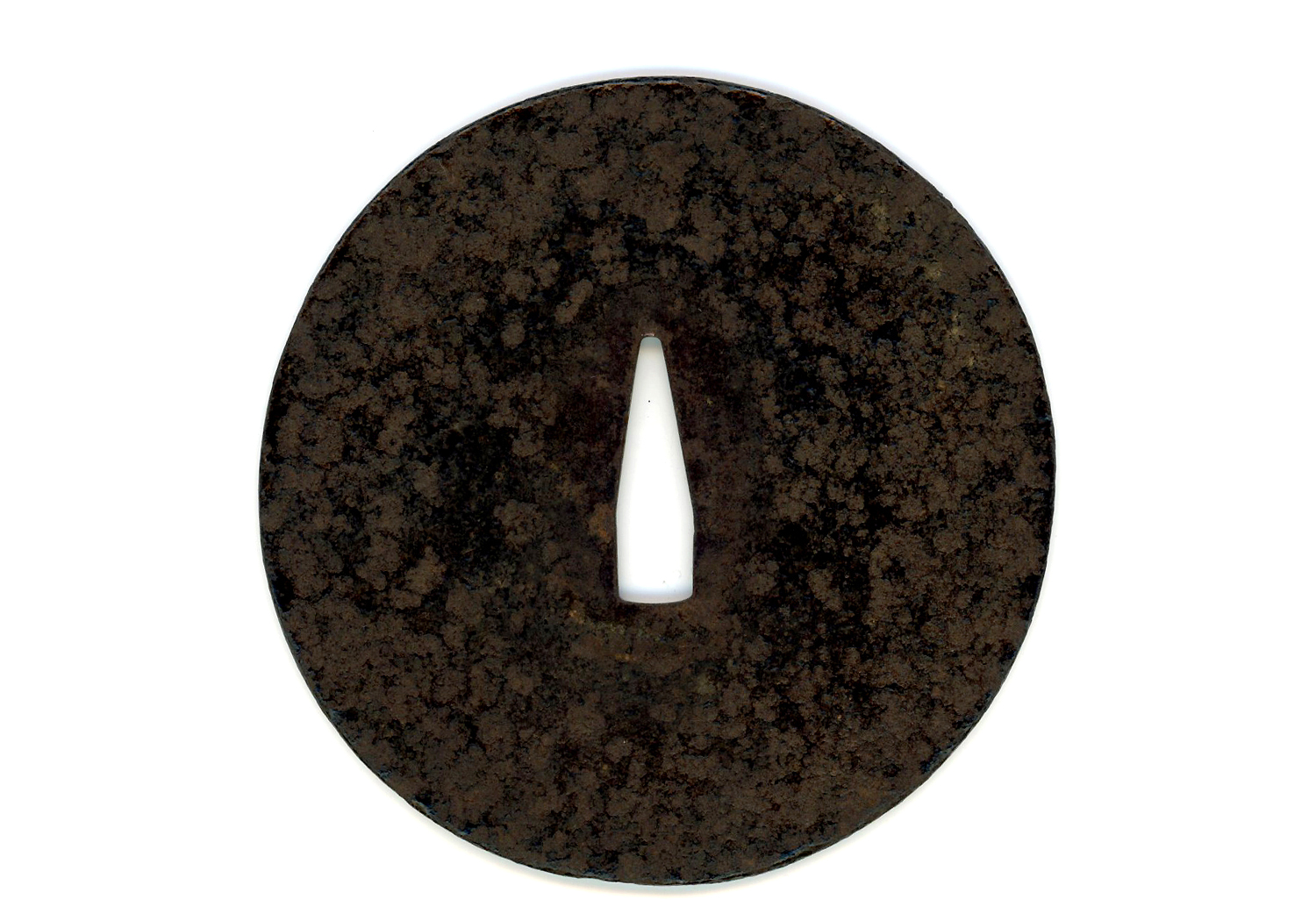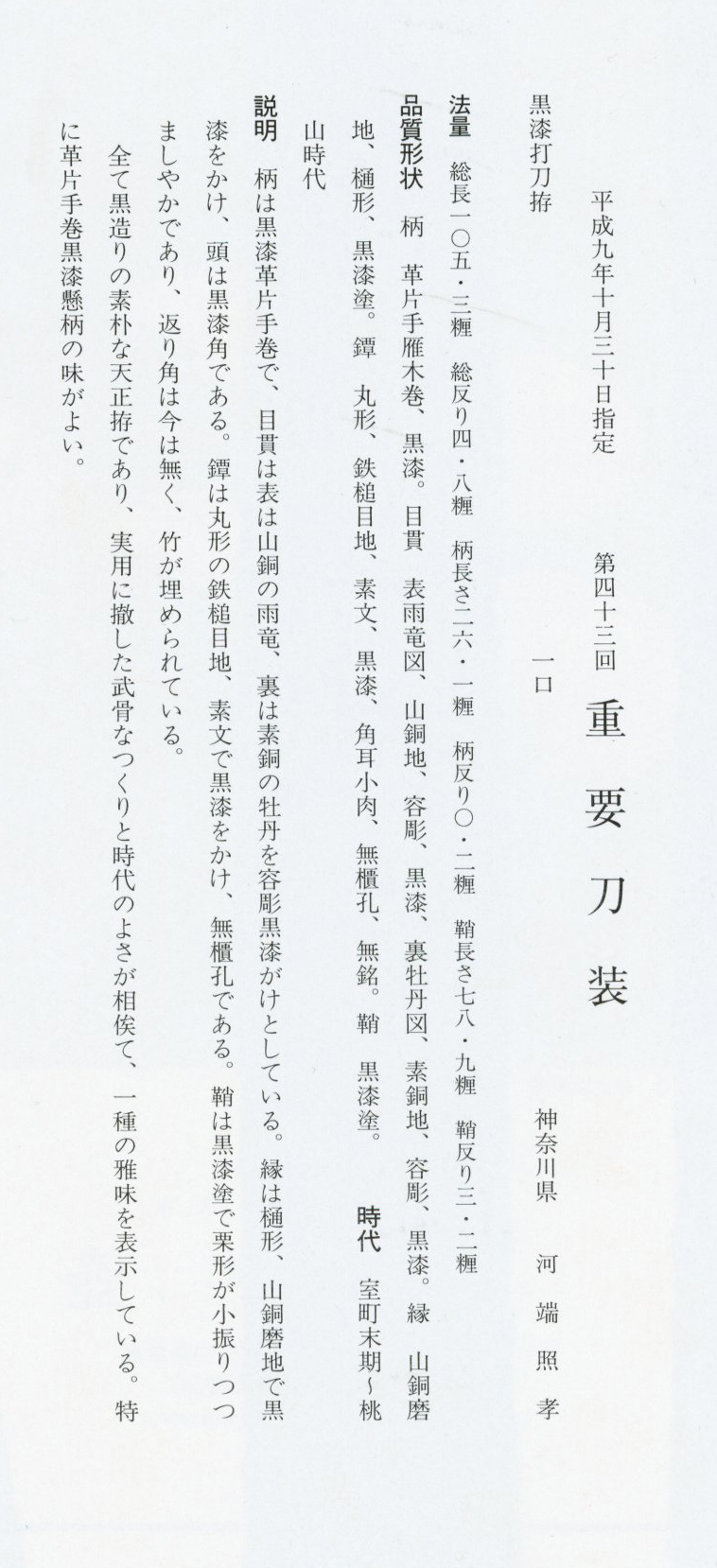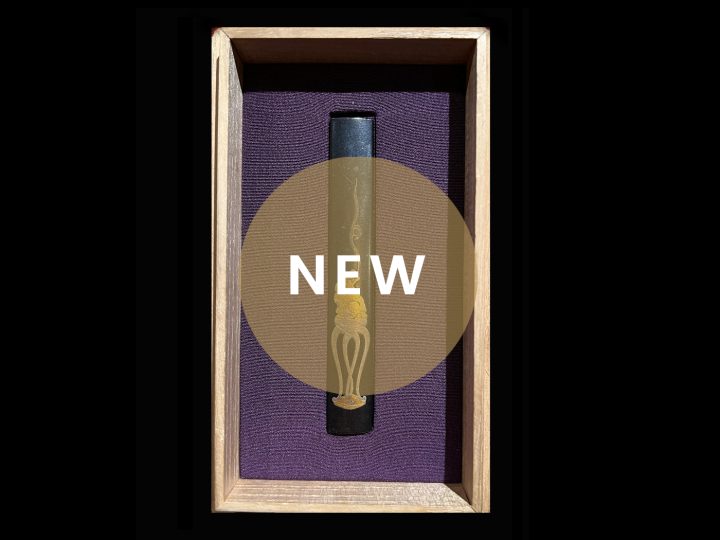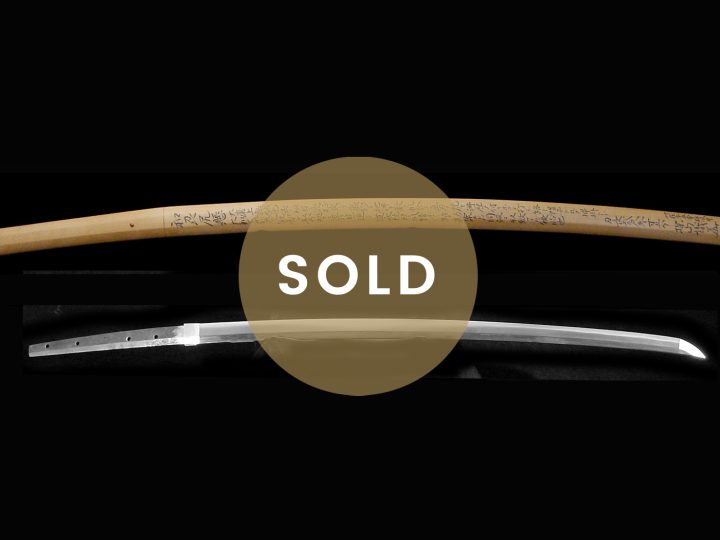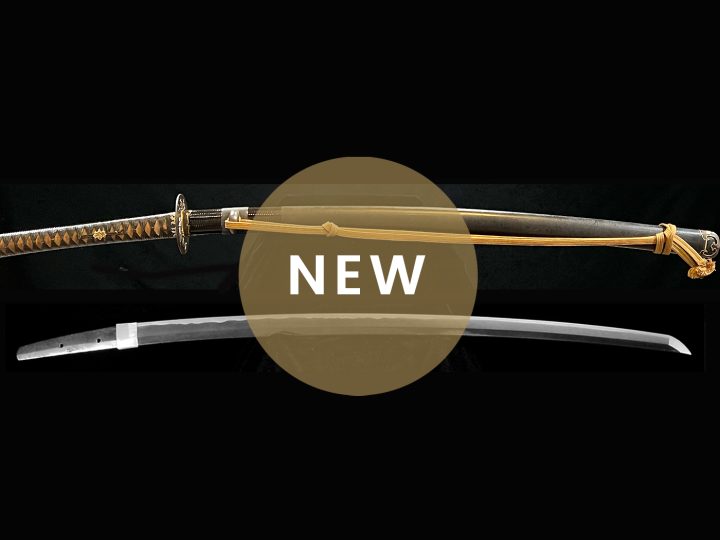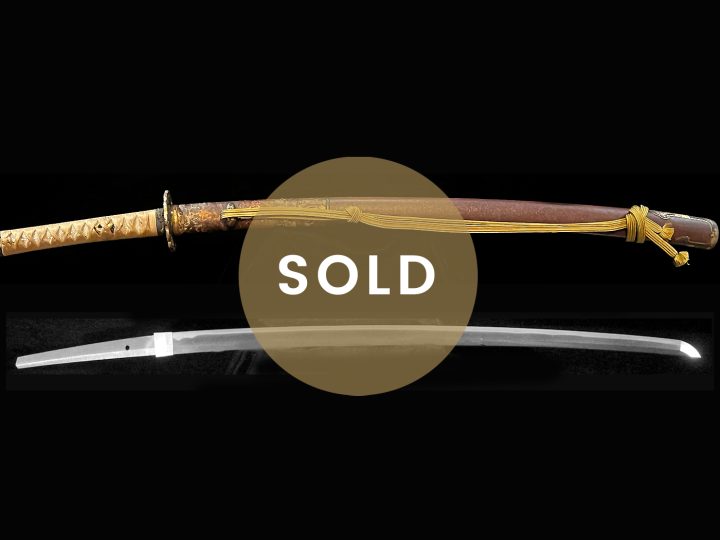
I am pleased to present this truly rare item for sale. It is an original and intact uchigatana koshirae from the Tensho Era of the Muromachi Period (circa 1570’s). This is the koshirae of a serious Samurai and it is thoroughly described below in the translation of the Jûyô zufu papers. What makes this koshirae so rare is the fact that most of this type of koshirae were lost over the years. They were often damaged in battle and discarded. Also as they aged or as styles changed, they were allowed to fade away and were not treasured as were the more elaborately lacquered koshirae with kinko and Gotô kodogu that were owned by high ranking Samurai or members of the merchant class. This was a real “fighting” koshirae and of great historical value and importance.
The length of the tsunagi indicates it held a blade of just under 30 inches or 79 cm. The blade had a deep koshi-zori and according to the information written on the tang of the tsunagi, it was a blade from Bizen Province signed with the ni-ji mei Hirotoshi (弘利). There were two generations of Bizen Ichimonji smiths working in the Kamakura era by this name and it very well could have been a blade by one of them. We will never know for certain since the blade has been separated from this fantastic koshirae. The shape of the blade would certainly be correct for a blade of this school and time period.
Designated Jûyô Mounts at the 43rd Shinsa on the 30th of October, the 9th Year of Heisei (1997)
Black lacquered Uchigatana Koshirae.
Dimensions: Overall length: 105.3 cent.; overall curvature: 4.8 cent.; tsuka length: 26.1 cent.; tsuka curvature: 0.2 cent.; saya length: 78.9 cent.; saya curvature: 3.2 cent.
Form of the Component Parts: The tsuka is wrapped in leather katake-gangi style (solid wrapping with raised striations) and lacquered black. The omote menuki is carved in the shape of a rain dragon with a yamagane (yamadô) ground and lacquered black, and the ura menuki is carved in the shape of a peony with a suaka ground and lacquered black. The fuchi has a polished yamagane ground, a higata (grooved) shape and is lacquered black. The tsuba is round with a hammered iron ground and lacking any decorations. It is black lacquered and has a squared rim with slight rounding (kaku-mimi ko-niku) and is without hitsu-ana. It is unsigned. The saya is black lacquered.
Period: Late Muromachi to Momoyama
Description: The tsuka is solidly wrapped in black lacquered leather. The omote menuki is a yamagane rain dragon, and the ura menuki is a suaka peony. Both are carved to shape and lacquered black. The fuchi has a grooved shape with a polished yamagane ground that is lacquered black. The kashira is black lacquered horn. The tsuba is round with a hammered surface that is without decoration and black lacquered. There are no hitsu-ana. The saya is black lacquered and the kurikata is small sized and modestly proportioned. The kaeritsuno is now missing and the opening is fill with a piece of bamboo.
This piece is entirely finished in black and is a very simple Tenshô koshirae. This koshirae is for practical use without being brusque, which goes hand in hand with the merits of its period, creating one kind of elegance. In particular, the leather, solidly wrapped black lacquered tsuka is highly tasteful.
PRICE: SOLD



